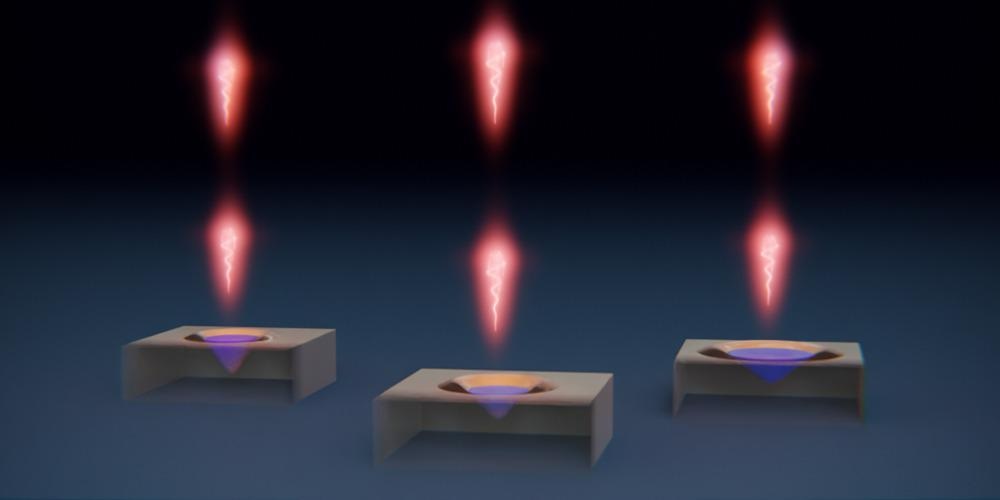Identical light particles (photons) are critical for several quantum-physics-based technologies. Identical photons with distinct quantum dots have now been generated by a team of researchers from Basel and Bochum, paving the way for applications such as tap-proof communications and the quantum internet.
 Although the quantum dots of the Basel researchers are different, they emit exactly identical light particles. Image Credit: University of Basel, Department of Physics.
Although the quantum dots of the Basel researchers are different, they emit exactly identical light particles. Image Credit: University of Basel, Department of Physics.
Most quantum-based devices rely on photons that are all the same. However, creating such photons is incredibly challenging. Not only must they have the same wavelength (color), but they must also be of the same form and polarity.
In partnership with colleagues at the University of Bochum, a team of researchers led by Richard Warburton at the University of Basel has successfully produced identical photons derived from distinct and widely dispersed sources.
Single Photons From Quantum Dots
The researchers utilized quantum dots in their tests, which are tiny structures in semiconductors that are only a few nanometers in size. Electrons are confined in quantum dots, allowing them to only take on extremely particular energy levels.
When moving from one level to the next, light is emitted. Single photons may be manufactured at the touch of a button using a laser pulse that induces such a transition.
In recent years, other researchers have already created identical photons with different quantum dots. To do so, however, from a huge number of photons they had to pick and choose those that were most similar using optical filters.
Lian Zhai, Study First Author and Postdoctoral Researcher, University of Basel
Only a few useful photons remained as a result.
Nature Nanotechnology published the study.
A new, more ambitious method was employed by Warburton and his associates. To begin, Bochum scientists created ultrapure gallium arsenide, which was used to create the quantum dots. As a result, inherent differences between quantum dots might be maintained to a minimum.
Electrodes were then utilized to expose two quantum dots to finely adjusted electric fields by the Basel researchers. These fields changed the quantum dots’ energy levels, and they were adjusted so that the photons released by the quantum dots all had the same wavelength.
93 Percent Identical
The researchers used a half-silvered mirror to illustrate that the photons were indeed indistinguishable. They noticed that the light particles nearly always traveled through the mirror as a pair or were reflected as a pair.
They can deduce that the photons were 93% similar based on this finding. In other words, even though the photons were “born” entirely independently of one another, they created twins.
Furthermore, the researchers were able to actualize a key component of quantum computers; the controlled NOT gate (or CNOT gate). Quantum algorithms that handle specific problems significantly quicker than conventional computers can be implemented using such gates.
Right now, our yield of identical photons is still around one percent. We already have a rather good idea, however, how to increase that yield in the future.
Giang Nguyen, PhD Student, University of Basel
He was engaged in the experiment’s execution with his colleague Clemens Spindler. If yield increased, the twin-photon approach would be applicable in a variety of quantum technologies.
Identical photons from different sources
Identical photons from different sources. Video Credit: Swiss Nanoscience Institute and Department of Physics.
Journal Reference:
Zhai. L, et al. (2022) Quantum interference of identical photons from remote GaAs quantum dots. Nature Nanotechnology. doi:10.1038/s41565-022-01131-2.